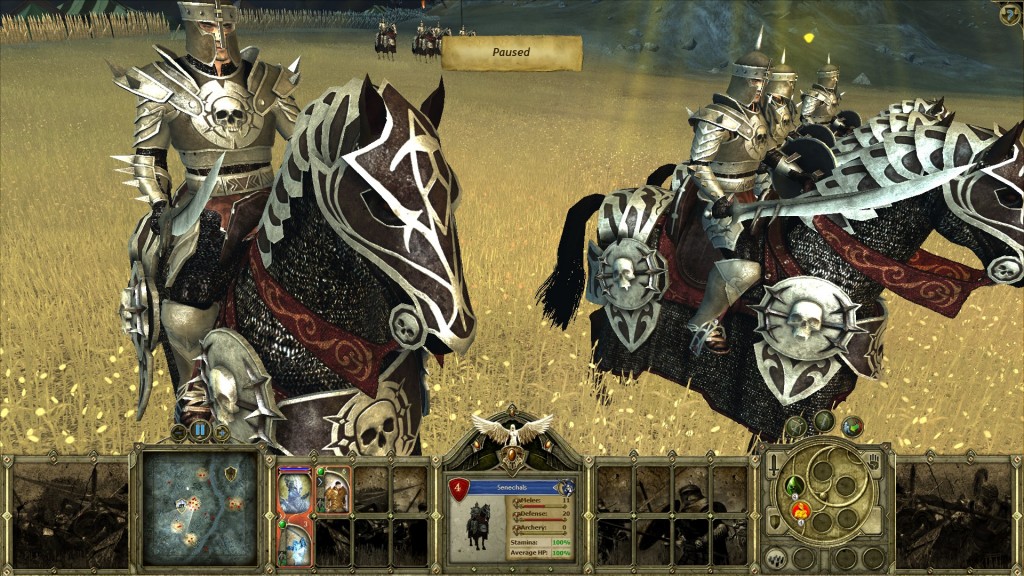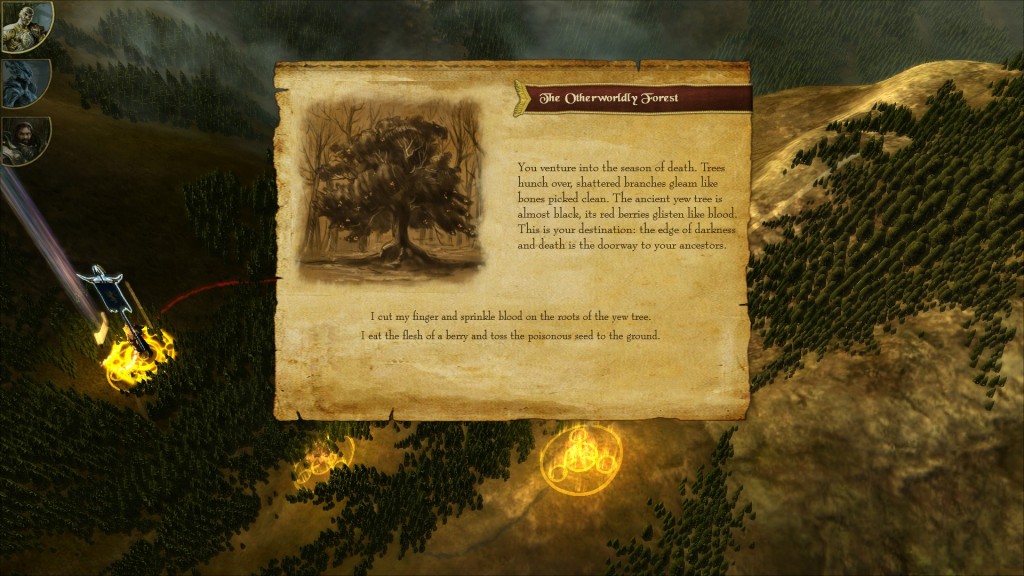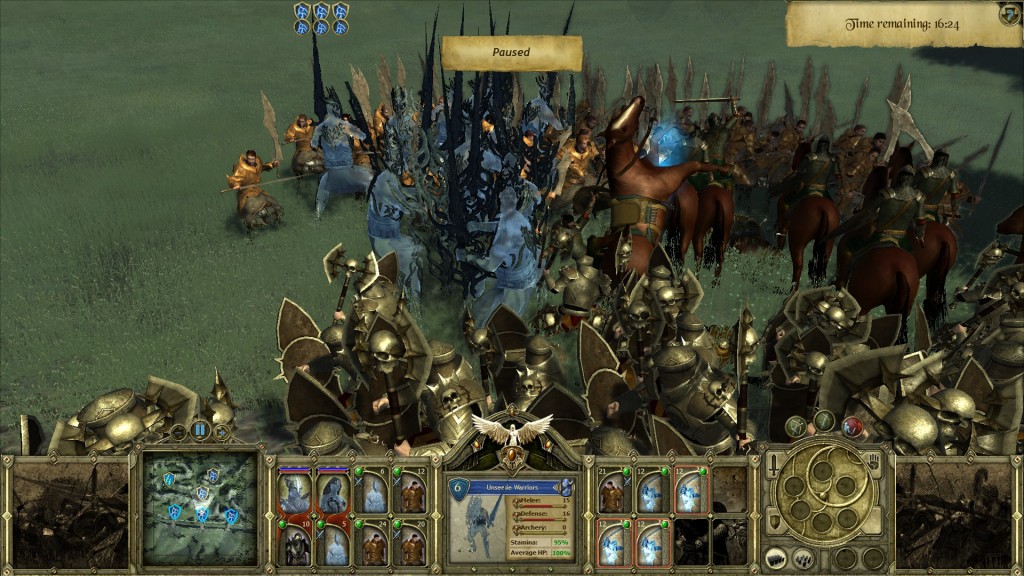
Before a battle is played, however, the game shows one of its most interesting points. After selecting a character on the campaign map and moving to a mission, the player is presented with a written story, accompanied by sketched images. This helps advance the plot and really draws players into the world. It is almost a choose-your-own-adventure style story, allowing players to actually decide what their character will do. This helps players relate to the characters. The choices made in the story often affect the coming battle - what sort of battle it will be, how many units on each side and of what type. It is a nice feature.
Battles are handled on real time 3-Dimensional maps, and really allow the graphics engine to shine. Units are very detailed, and environments are lifelike. The game is great to look at. A variety of unique environments are present during the game, adding a lot of variety. Maps are usually quite large and detailed, providing various ways to meet objectives, and allowing for different play styles. The game can be strategically paused at any time, which allows players to stop and assess the situation.
Battles are generally quite long with a specific objective rather than just “kill enemy”. They are well set out and fun to play. One particular battle, for example, takes place on another plane of existence, with an fast day/night cycle. During the night, players can move their troops around and advance towards the goal, fighting some enemies, while slowly summoning spectres to join their army. During the day, players would have to hide under giant clouds, and other, stronger enemy raiding parties would attack. This sort of diversity and construction in the battles is great and provides a lot of diversity.
Players control various units depending on their chosen character, though they are basically in the stereotypical groups (archer, cavalry, foot soldier etc.) Units sometimes have abilities they can use for specific purposes, like turning invisible for a short time. Hero characters have several abilities that can be bought and leveled up. These provide tactical avenues, which can be worked into a strategy. For example, when faced with lots of enemy archers, you can cast Fog of Avalon to create a fog to weaken the accuracy of the archers, then charge to meet them head on.
At this point, the game is quite polished, aside from some balance issues (for example, a group of archers took out a group of cavalry) which should be fixed by release. Most issues can be found with the controls and interface. The controls are a little unintuitive, for example scroll out to zoom in, scroll in to zoom out. The camera is also a little hard to control at times, though this does get better as players get used to it. The interface can be, at times, cluttered, as abilities, stats, a moving model of the unit selected, and a map, all reside next to each other. This is mostly a problem only in the heat of battle.
Overall, Fallen Champions is a good mix of role playing and strategy. Structured battles provide good fun and diversity when playing. The role-playing aspects are handled well, the story will likely draw players in, and the stories before each battle are a great interactive way of setting the scene. Balance and control issues hamper the experience but these could be patched or fixed by release.



Recommended Comments
There are no comments to display.
Please sign in to comment
You will be able to leave a comment after signing in
Sign In Now